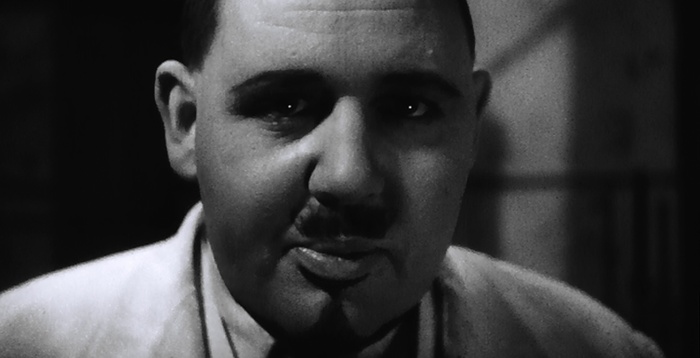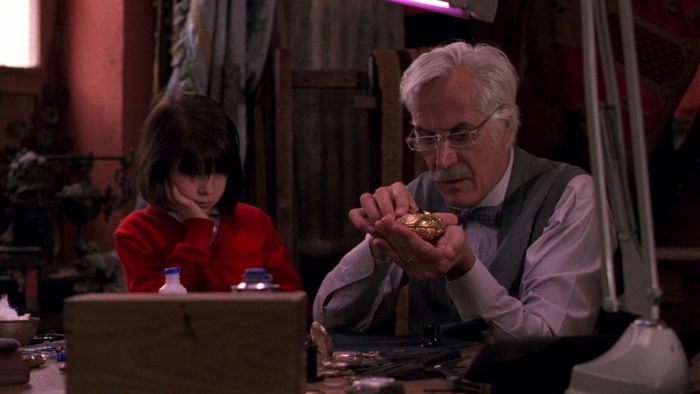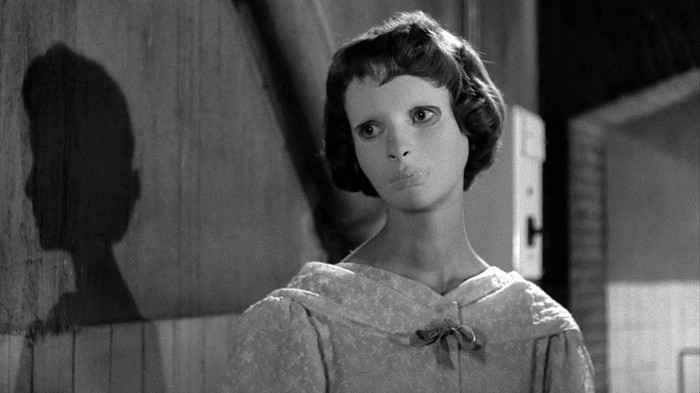Summer is in its final death throes. The temperatures are dropping, cool, bracing winds are blowing, leaves are turning brown and falling, crushed underfoot like the hopes and dreams of foolish mortals. Grocery stores now sport mutilated pumpkins, styrofoam tombstones, and decorative corpses. And of course, the pumpkin spice must flow. These and other nominally ghastly signifiers of the season can mean only one thing: It’s Halloweentime! To celebrate, we embark upon a six week long marathon of horror movies and associated media. Why six weeks? Because that’s, like, two weeks longer than most celebrations, and we’re better than most people.
On this first week of our marathon, we will tackle three movies from The Criterion Collection. I suppose I could just use Filmstruck to watch these movies, but in this age of disappearing digital purchases, I want to harken back to the days of physical media. This will be part of a larger, multi-week theme, but for this week, I want to focus on the OG physical media masters.
For the uninitiated, The Criterion Collection began in 1984 as purveyors of laser-discs, a storage medium that never quite caught on except with major cinephiles with cash to burn. They really came into prominence with the DVD. The movies are always presented in their original aspect ratios and are painstakingly restored, remastered, and/or transferred (a process often overseen by the filmmakers themselves), ensuring a high quality experience. Furthermore, they pioneered the use of extra-features like audio-commentaries, much of which is disappearing again in the age of streaming. Heck, one of the more underrated aspects of the Criterion treatment is the frequent inclusion of a booklet featuring new essays, concept art, and other ephemera. The artwork and packaging is always top notch and warrants prominent display on your storage shelves not just because they indicate that you are a connoisseur of good taste, but because they just look great.
The copyright regime being what it is, Criterion doesn’t always have the access to the films fans might be most attracted to (studios want to keep those profits for themselves), so they focused on forgotten but influential older films, foreign movies, or art-house classics that, while important to film history, are often overlooked by modern audiences. Early Hitchcock, Akira Kurosawa, Jean Renoir, and so much more; the collection is riddled with classics, often things that would be lost to the annals of history, were it not for their diligence.
As time goes on and streaming increases its stranglehold on the industry, physical media is both dying… and paradoxically flourishing. Since studios can no longer count on the cash cow of DVD/BD sales and have moved on to streaming, they are a little more open to making physical media rights available to niche, specialist outfits like Criterion (and a few others we’ll cover later in the marathon), who give these films the love they deserve.
In terms of Horror, the Criterion Collection has a few small corners of the genre sewn up. Some favorites that we won’t be covering today including: Sisters, The Blob, House, Rosemary’s Baby, Scanners, Night of the Living Dead, The Silence of the Lambs (just recently reissued on BD!), not to mention a bevvy of Hitchcock and other horror adjacent thrillers. Today, we will be covering three moderately obscure entries from the collection, so let’s dive in:
- The Simpsons: Treehouse of Horror XIII: The Island of Dr. Hibbert
- Splice (trailer)
- The Island of Dr. Moreau (trailer)
- Island of Lost Souls [Criterion] – An early (indeed, the first non-silent) adaptation of H.G. Wells’ novel The Island of Dr. Moreau, it might also be the best. Judged against it’s contemporaries, it stands out (though I don’t think it beats the best of the classic Universal horror pieces). A story with some level of depth, good performances, nice production design, and solid cinematography anchor a very effective production. The story of a mad scientist who attempted to convert animals to humans using perverse, brutally painful medical procedures disgusted audiences at the time and led to various censorship schemes and bannings. To modern eyes, it’s a bit more staid (originally banned in the UK, then rated X, it’s now rated PG), but even still, some elements distinguish this from its contemporaries. In particular, Charles Laughton’s performance as Dr. Moreau is great. He plays the character as a sadistic schemer, convinced of his own god-like superiority and willing to justify all manner of horrors in service of his scientific curiosity. Laughton could have certainly hammed it up in the role and there’s a bit of that here, but there’s also a sort of chilling restraint, with much of his sadistic intent conveyed through his eyes, winks, smirks, or a slight, almost imperceptible smile.
Moreau is a classic villain largely due to Laughton’s performance. Bela Lugosi also shows up as one of the beast men; buried under hairy makeup, but able to imbue the sad creatures with humanity and compassion (“Are we not men?”) Clocking in at 70 minutes, the film is short and sweet and the climax in which Moreau gets his comeuppance works well (spoiler for a century old story). Apparently H.G. Wells hated the movie, perhaps due to liberties taken with the adaptation, notably the introduction of the lurid (for the time, ahem) Panther Woman and fears of miscegenation, which distracted from his themes anti-vivisection and animal cruelty (which, to be sure, are still in the movie, and still relevant today). Not sure if Wells’ distaste kept the film buried, but it’s only recently re-emerged thanks to the likes of Criterion (and it was included in a DVD box set for Universal, which actually owns the film now), and it stands alongside the great Universal monster flicks of the 30s. Well worth checking out for fans of the era. Special features include an insightful and knowledgable commentary track by film historian Gregory Mank. There’s also a discussion with director John Landis, makeup artist Rick Baker, and genre expert Bob Burns, in which they discuss the film’s influence, why it never really caught on, and H.G. Wells’ distaste for the adaptation. Another interview with film historian David J. Skal, which gives a good overview of horror of the time and he makes a good argument for the differences in filmic adaptations. Richard Stanley, the director of the infamously ill-fated 1996 adaptation gives his take (also worth checking out: Lost Soul: The Doomed Journey of Richard Stanley’s Island of Dr. Moreau). Finally, the founding members of Devo also give an interview about the influence (their first album: “Are we not men?”) on their music and videos. It’s a handsome little package, and fans of classic horror like myself would be enamored. ***
- The Simpsons: Treehouse of Horror IV: Bart Simpson’s Dracula
- What We Do In The Shadows (trailer)
- Is that a whip? (Robot Chicken)
- Cronos [Criterion] – Guillermo del Toro’s first feature length film is a modern-day spin on the vampire that remains distinct to this day. The story begins with the creation of the Cronos device, an intricate mechanical bug created by an alchemist in the 1500s; cut to present day when the alchemist, having lived 500 years, dies in an accident. The Cronos device, hidden in a small statue, winds up in an antique shop where mild-mannered Jesus Gris (and his granddaughter) discover the device. Meanwhile, a dying millionaire has discovered the alchemist’s journal and wants the device to extend his own life. I think you can see where this is going, but it’d doesn’t quite play out like you might expect. This is a vampire film where the term vampire is never spoken; it mixes hoary old tales of alchemy with vampire myths, and filters them through del Toro’s conception of fairy tales, yielding a unique take on classic horror themes. For instance, once our hero inadvertently triggers the device and comes under its spell, he craves blood. But while lesser films would, for example, make him threaten and almost kill his granddaughter out of hunger, this film never goes there.
Nor does it glamorize or sensualize the craving, instead portraying a melancholy and sad man crawling on the ground to slurp up a bit of spilled blood. This is a movie that could be schlocky, but that was not del Toro’s goal, and the film has lots of thematic depth if you look for it. It’s a slow burn, but never drags. In the end, it’s a unique take on vampire myths, with del Toro’s distinct voice. Special features include two commentaries, one from del Toro, and another from three producers. A video tour through del Toro’s house that plays like a horror nerd’s episode of Cribs (he has all sorts of horror memorabilia, and room hidden behind a bookcase). A bunch of interviews with the actors, an old del Toro short film, and standard stuff like trailers and stills are also on the disc. The booklet that comes with the disc includes a new essay and del Toro’s production notes, which are rather interesting. Another handsome package, with lots to chew on. ***
- The Fly (trailer)
- The Human Centipede (trailer)
- Halloween RARE Deleted Scene 1978 (short)
- Eyes Without a Face [Criterion] – While this week’s theme was based around the Criterion Collection, I could very well have called the theme “Mad Scientists”, as this is the third film that prominently features such (I suppose the alchemist in Cronos is arguable, but go with me here). An obsessive doctor specializing in transplants attempts a radical plastic surgery to restore his daughter’s face (recently disfigured in a car crash). Once again, a schlocky premise with a more artful execution, this story is filled with common tropes. While not specific to a face transplant, there are lots of stories about a grief-stricken scientist sacrificing everything to save or otherwise reconnect with a loved one. In this case, the imagery is what sets this apart from similar tales. The daughter Christiane wears a smooth, hard white mask to conceal her deformity, a clear prelude to other, more famous masks that would later pepper the horror genre.
The reveal of her true face is quite effective. There is a dog kennel that is well composed and creepy. The actual, grueling face-lifting scene is quite unsettling. So it’s visually impressive, and the performances are pretty good too. The score immediately turned me off though. There’s something too plucky and playful about it, almost like a calliope, such that it doesn’t really fit with the tone of the film. It turns out that this tune is only played during certain scenes though, so the rest of the film has a reasonable score. There’s a whole subplot involving the police that doesn’t quite fit. Perhaps it’s a commentary on this sort of thing (common enough in Giallos and other such flicks), but that doesn’t make it particularly fit any better. This is a really interesting film, with clear influence to this day, and there are bits of it that I love, but it doesn’t quite hold together as much as I’d like. Special features include archival and new interviews, excerpts from documentaries that involve this film, and a documentary the director made about the slaughterhouses of Paris. There are less special features here than the others, but they’re decent enough for what they are. This does seem like the sort of movie that would really benefit from one of those film historian commentaries though! As per usual, the packaging and artwork is great. **1/2
One week down, only five to go. Stay tuned for next week, where we’ll revisit one of last year’s weekly themes, obscure scream queens. After that, we’ll return to physical media-land for a few weeks, with some bonus concurrent themes.


